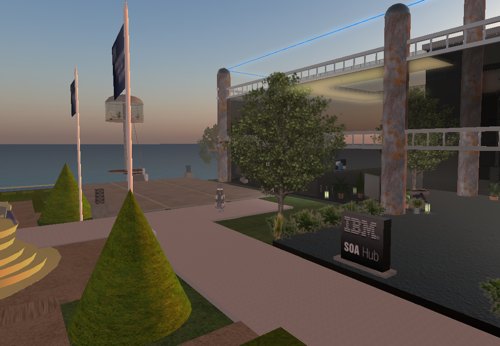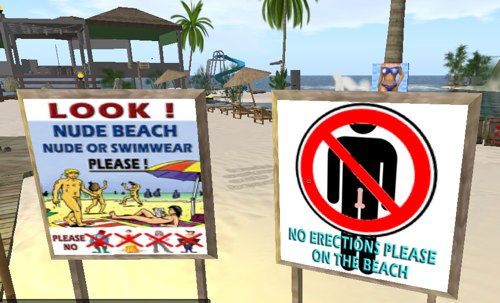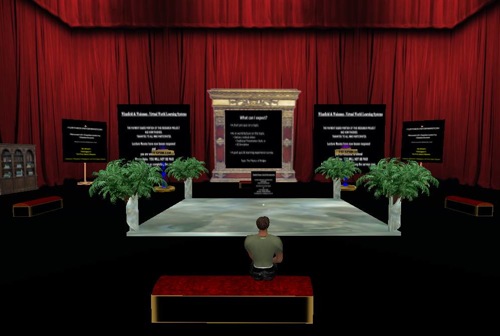The Second Life sixth birthday is looming. What, I wondered, were the changes, for good or for ill, that made the biggest impacts upon the community of users, since the last birthday? While pondering this, I had the following thoughts:
“Don’t worry, users can barely remember what happened last week. 12 months down the track, they’ll have forgotten the whole thing.”
We’ve all had this thought at one time or another: we’ve held the expectation that the majority of users will not only not notice the impact of the Second Life event that causes us so much elation, or grief, or confusion, but will surely not remember it in times to come. Perhaps the majority of users have not even held an account for that long.
Maybe that’s true.
But stop to consider this: a minority of users are deeply invested in Second Life. If a minority of users both notice and recall events that occurred with respect to Second Life, perhaps that’s ok. If the minority of users are the people who use Second Life more of the time, then the impact of their memories could be weighty indeed.
Let’s take that as read.
Now combine this with the fact that memories are elastic in time. Things that you felt very strongly about at the time will tend to linger in the memory, and can seem to be more recent than other, less charged, memories.
So, we have a minority of users who, with their investment in Second Life, are more likely not only to have long and sustained memories of things that affected them, but also to continue to talk about those things, and to pursue restitution where things have gone badly. Their effect upon Second Life and upon the community is greater than you might otherwise expect, in this specific fashion.
During the week, I asked readers of Tateru Nino’s Dwell On It blog, and others, to leave a comment containing their memories of Second Life, highlights and low lights, over the past 12 months. I also asked them not to do any research, but to work from their own memories alone. I felt that it was important to ask users who have enough investment in Second Life to read blogs about it, and to respond.
As you might expect, respondents remembered quite a number of things that had happened previous to that time as actually occurring in that year.
The other thing that struck me was the overall number of events that were recalled by each user; i.e. many, many more than I had expected, or could remember myself.
So, with those thoughts, I present to you the list I compiled from the responses I received, in date order, with links to interesting and pertinent information.
Age verification: announcement to implementation.
4 May 2007 Age and Identity Verification in Second Life
5 December 2007 Age verification arrives on the Second Life grid (updated)
Ageplay: in the media, getting banned.
10 May 2007 Child Porn Panic Hits ‘Second Life’
30 October 2007 Virtual Ageplay Still Too Real
The gambling ban.
25 July 2007 Wagering In Second Life: New Policy
The banking ban.
5 January 2008 Virtual Banking – Linden Lab intervenes
Bay City announced.
22 February 2008 http://secondlife.wikia.com/wiki/Bay_City
Trademark issues.
25 March 2008 Linden Lab asserts control of names and images
Havok4 released on the main grid.
31 March 2008 Cry “havoc” and let slip the squirrels of war!
Mark Kingdon, new CEO.
22 April 2008 Announcing our New CEO!
Second Life fifth birthday: who and what is not welcome?
21 May 2008 Calling All Cultures to the Second Life 5th Birthday Celebration
30 May 2008 Calling all cultures? Not any more.
30 May 2008 Shape-Based Exclusion [Updated]
5 June 2008 M-rated avatars disinvited, then re-invited, to Linden’s birthday bash
16 June 2008 LL Hopes For Nipple Free 5th Birthday Celebration
SL5B.
“M Linden’s speech at SL5B viewed by many as a slap in the face of early adopters.” Marianne McCann
“The Linden Prize was also at SL5B. I remember how everyone was anticipating the “big news from Mitch Kapor”, and then scratching their heads at what it turned out to be.” Jacek Antonelli
Mono.
21 August 2008 Mono Launch
Burning Life 2008.
Ran from 25 September to 5 October 2008 http://burninglife.secondlife.com/
New City Sims.
20 October 2008 New City Area Discovered
Immersive Workspaces.
20 October 2008 Linden Lab and Rivers Run Red launch Immersive Workspaces 2.0
Openspace controversy.
28 October 2008 Openspace Pricing and Policy Changes
28 October 2008 Lost in the void
Big Spaceship.
3 November 2008 Transforming the Second Life Experience
Winterfaire.
28 November 2008 Winterfaire! Coming December 19 – January 5
13 December Win a Space in the Second Life Holiday Marketplace! (The Holiday Marketplace got underway shortly before the holiday period was over).
Xstreet and OnRez.
20 January 2009 XStreet SL and OnRez to Join Linden Lab!
Maps.
22 January 2009 Improvements to mapping and upgrade to SLurl.com
Linden Blog.
18 February 2009 After much ado with half-measures, the new Linden Blog is released.
Content Ratings.
12 March 2009 Upcoming Changes for Adult Content
21 April 2009 Update – Upcoming Changes for Adult Content
27 April 2009 What do Second Life’s new content ratings actually mean?
Second Life and Open Source.
30 March 2009 Intensifying Open Source Efforts
Finally, I noted that we noticed several Lindens leaving (Robin, Zee, Ginsu, Katt), but barely noticed those who came to take their place.
See this, Linden Lab? Users matter, and they have long memories.
 Linden Lab is now in the final legs of
Linden Lab is now in the final legs of 


Recent Comments